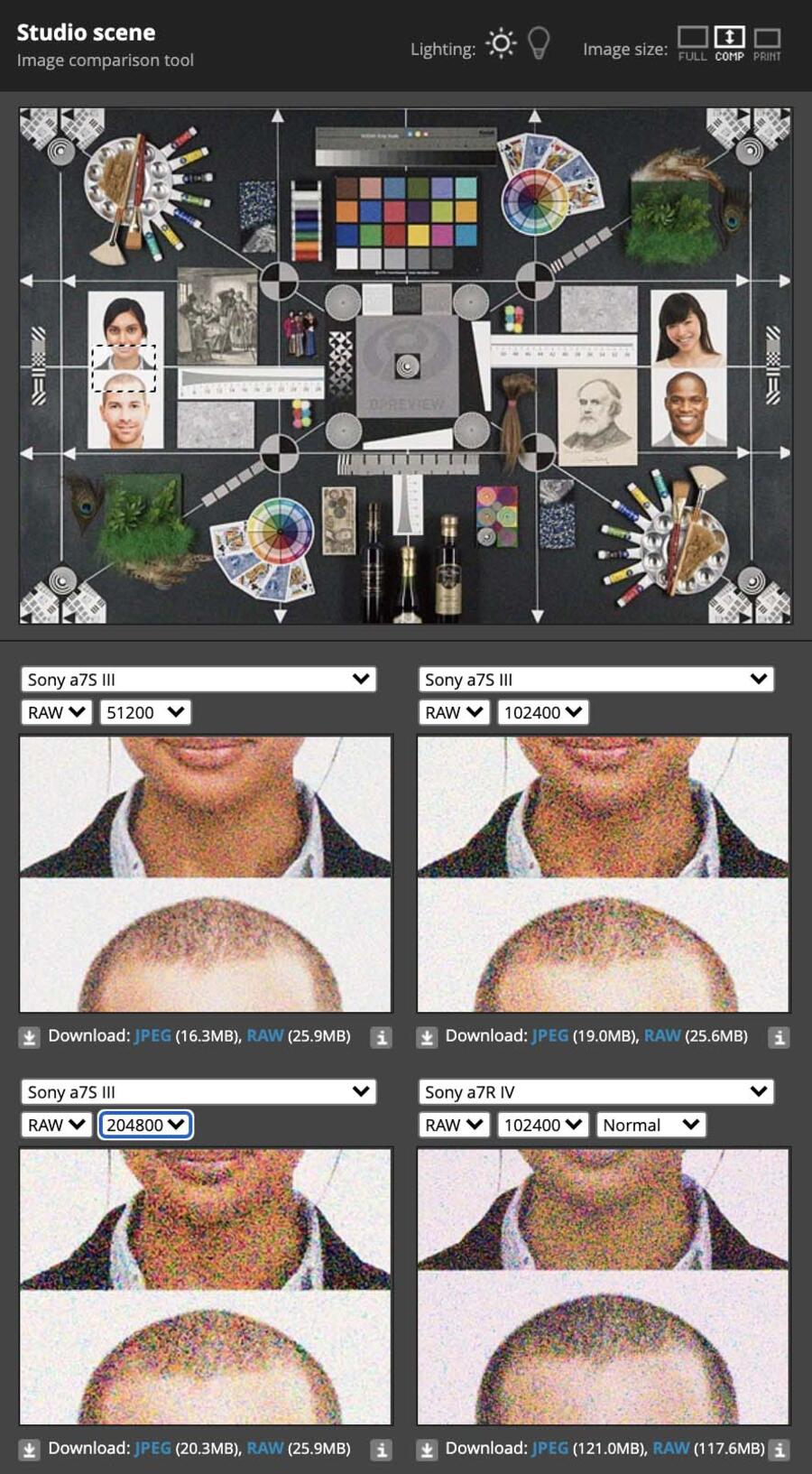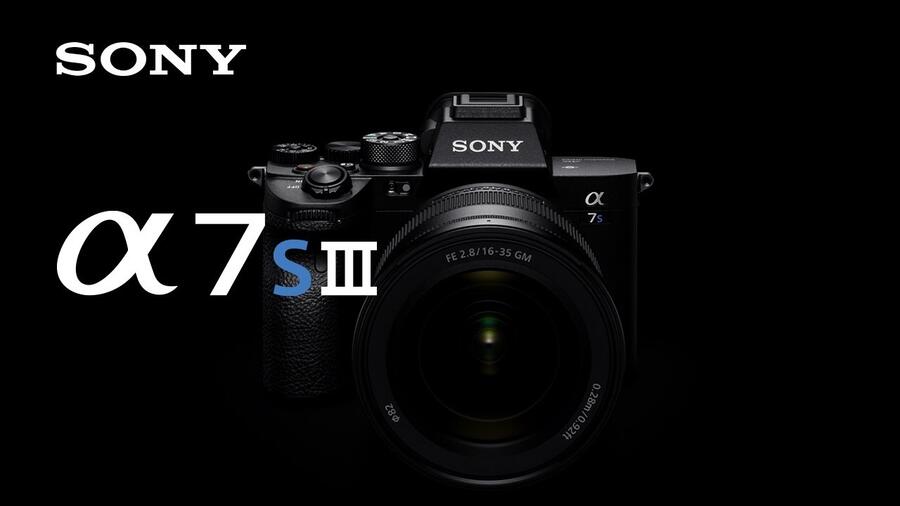Here are several Sony A7S III ISO Comparison Test Samples with A7R IV. Recently Dpreview added the Sony a7SIII to its studio comparison tool.
The results are quite impresive but we have to say that the Sony a7RIV seems to control noise better or as well as the a7SIII at 102,400 in some parts of the studio scene. On the other hand we can see some parts where the Sony a7R IV losses a lot of detail and the a7S III shines. You can see the high ISO examples of Sony A7S III here.
For Sony A7S III ISO Comparison Test Samples we have also covered interesting results for you. You can find all of them in the article.

CineD published their full Sony A7s III lab test results:
The new Sony a7S III shows a mixed bag in the lab test. It shows by far the best rolling shutter result that we ever tested for a full frame camera – 8.7ms. Amazing.
In the dynamic range test at ISO 640 it has a solid 12.4 stops at SNR = 2, but not much more is there – maybe half a stop. It looks like Sony has a lot of internal noise reduction processing going on to squeeze out this result. Which for most users is fine – a great out of the box result! At ISO 16000 the results are really impressive: 11.9 stops (SNR = 2) are measured.
A Panasonic S5 for example shows 12.1 stops (SNR = 2) but a 13th and 14th stop are still there – similar to the Canon R5 in RAW filming mode. And the Sony FX9 has a 13th, 14th and even a hint of a 15th stop buried in the noise floor, although it shows only 11.5 stops at SNR = 2 – thats the reason why we always give you the full result that you can put things into perspective.
In the underexposure test, the Sony a7S III is hindered by strange, large patches of chroma noise artefacts – if you don’t want to have those the limit is reached at 3 stops of undereposure – rather similar to the Sony FX9 if you use the internal All-I codec.
For comparison the recently tested Panasonic S5 actually looks surprisingly good until 4 stops of underexposure, you could get away even with the 5 stops underexposed image. Mainly because the noise is very finely dispersed such that you can very effectively apply noise reduction in post production (and yes, please turn off the lens compensation for V-Log as our reader Cliff Totten has pointed out).
In any case, I want to remind everyone that the lab test is just one piece of the puzzle when comparing / making a judgement on cameras – overall the Sony a7S III packs a huge list of superb features in a very compact body.
Times are good for us filmmakers.
Chris Brockhurst just published his Sony A7sIII Thoughts after real world use:
Sony a7S III vs a7 III – Low Light ISO Comparison – 3200 to 102400
The video below published by videographer and cinematographer, Sidney Diongzon. You can find A7S III footage straight out of the camera, then levels-adjusted, then color graded. At 3,200 ISO, the a7S III shows almost no noise whatsoever.
How to set up your A7S III for filmmaking? Check out custom picture profiles, menu settings, button assignments.
Check out the Sony a7S III reviews and tests. Best Lenses for Sony a7S III Camera | Best Memory Cards for Sony a7S III
Sony a7S III body: $3,498 at Amazon, B&H, Adorama.
Sony 160GB CFexpress Type A TOUGH Memory Card: $398 at Amazon, B&H, Adorama.
Sony MRW-G2 CFexpress Type A/SD Memory Card Reader: $118 at Amazon, B&H, Adorama.
Also join the Sony Camera Users Facebook Group to share your Sony photography
Read more Sony Camera Rumors here. See also Best Lenses for Sony Full Frame E-Mount





